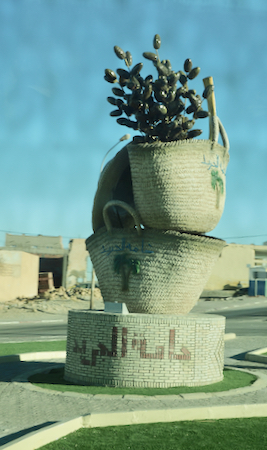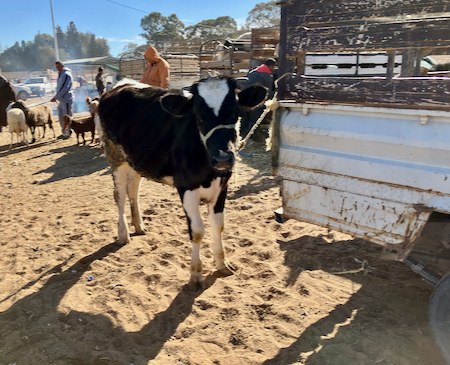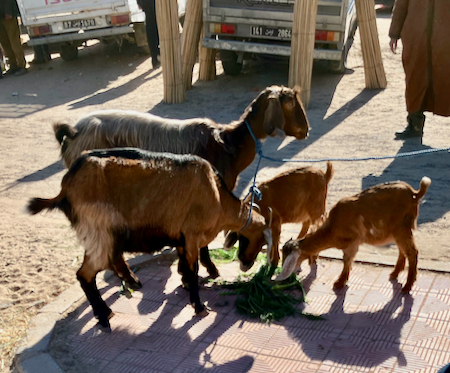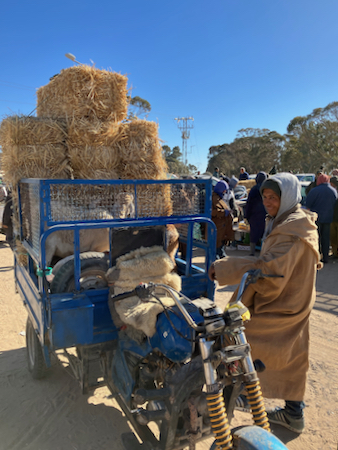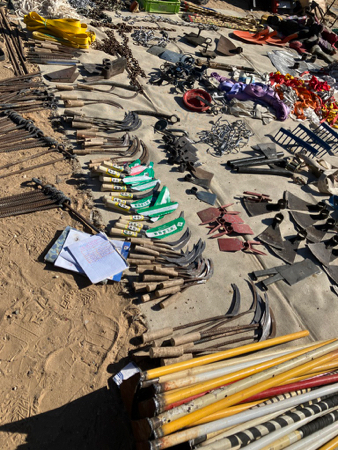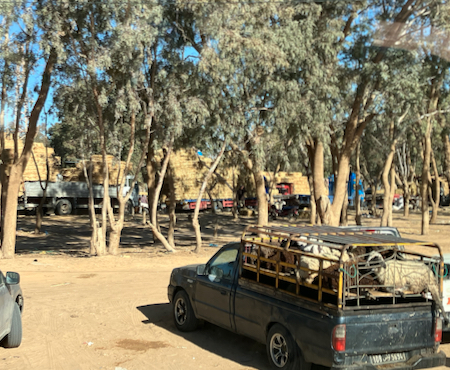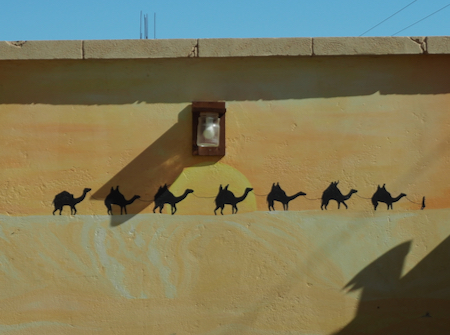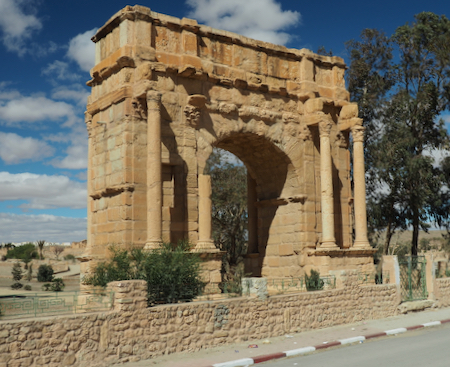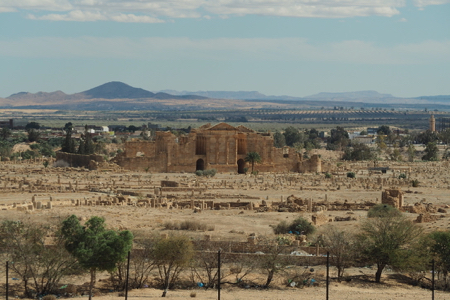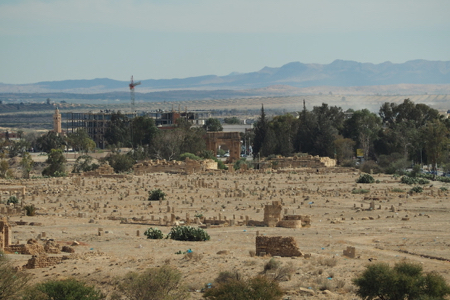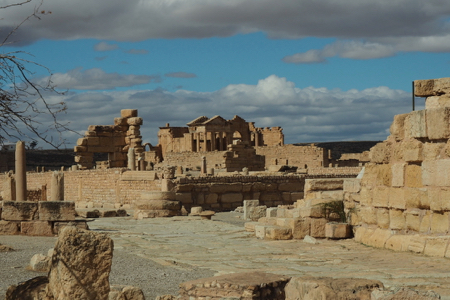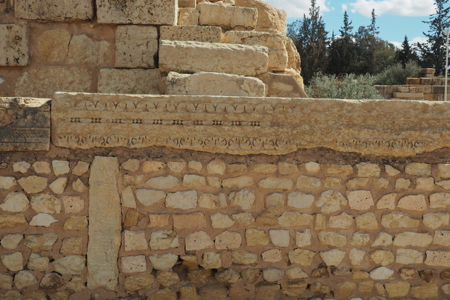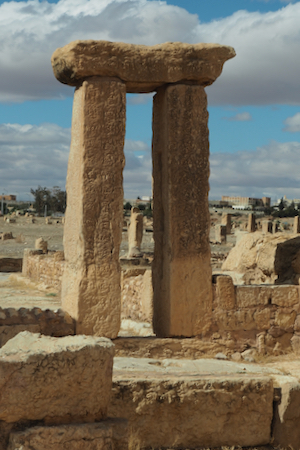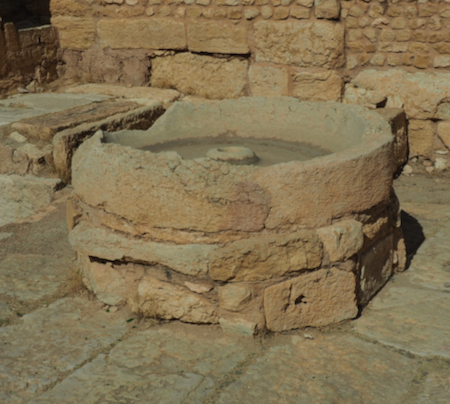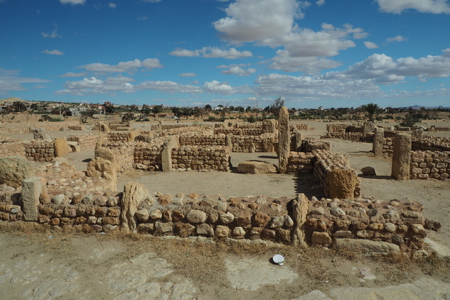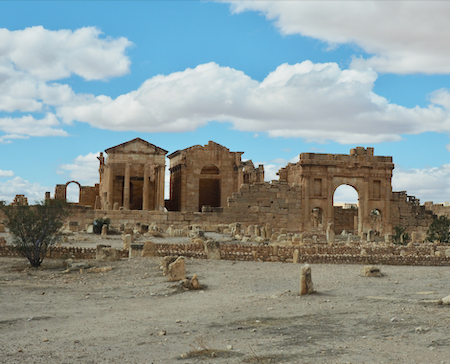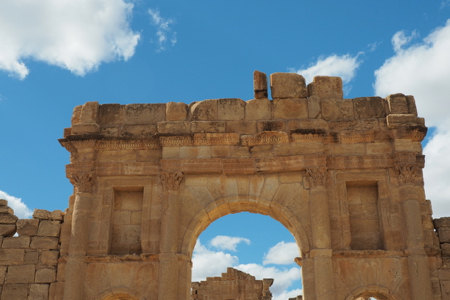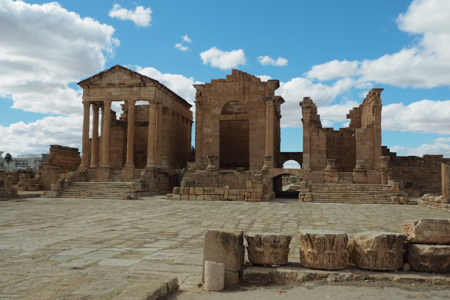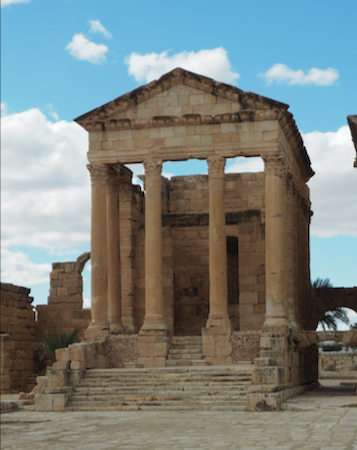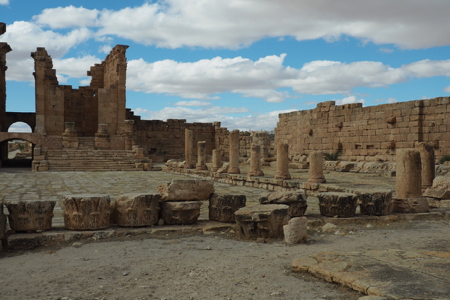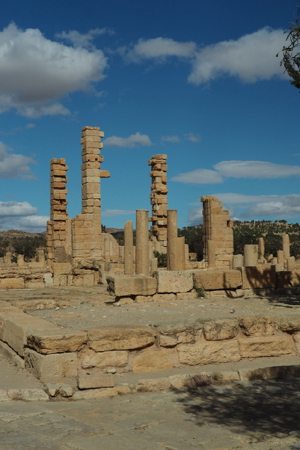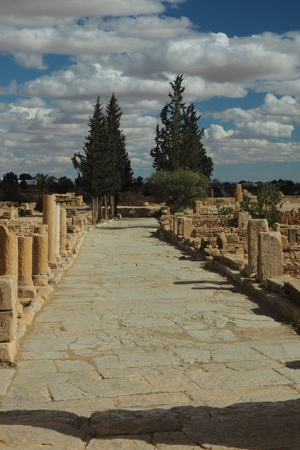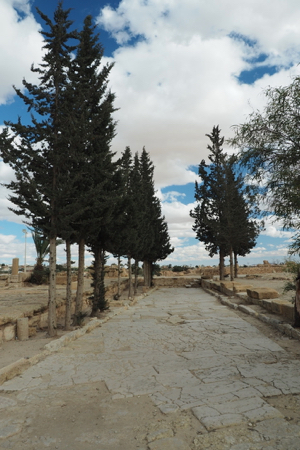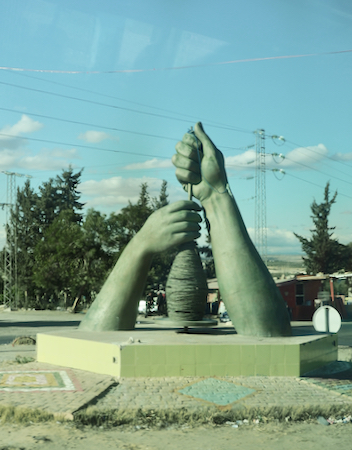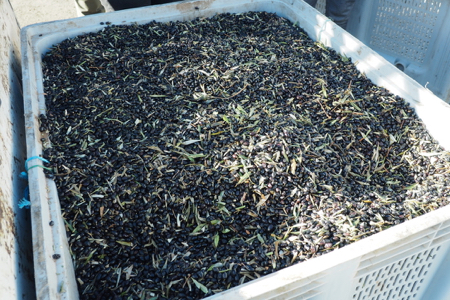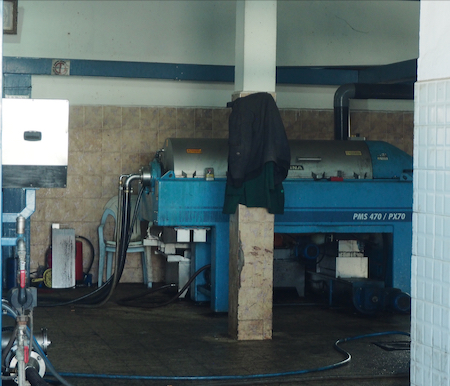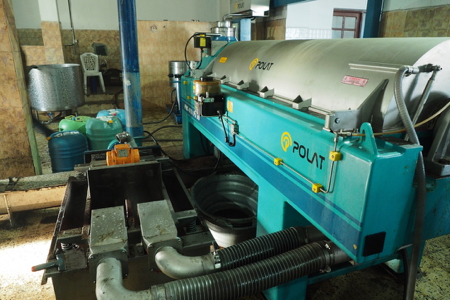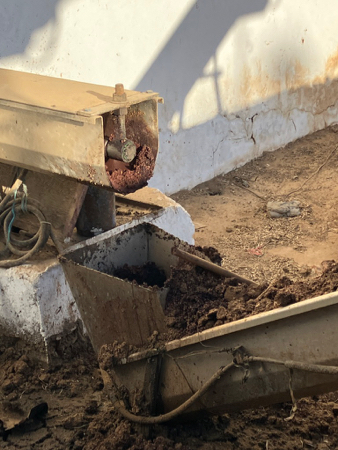Wed., 3/1/23 - Gafsa and Sbeita on the way to Kairouan
Our drive today from Tozeur to Kairouan is very long. We had an interesting stop in Gafsa to visit a livestock market were sheep, goats, some cows and horses were being bought and sold. There were also farm tools and seeds and hay for sale.
Round-about sculpture
Livestock market
Goats
Loading up the purchases
A shedding sheep
The sheep
The merchants and buyers
Expressing his opinion
Lots of other things for sale as well
Lots of hay
Bundles of sticks for sale
We stopped for lunch at an empty hotel and then went to visit the Roman site in Sbeita (or Sufetula). The Roman city is only one third unearthed and is waiting for UNESCO accreditation. However, the archaeology done there and the “reconstruction” apparently have many incorrect “restorations.” The city was built from 61 to 69 CE and was destroyed many times by Vandals, Byzantines, Arabs, and earthquakes.
Sbeita (or Sufetula) one of the 32 Roman cities in what is now Tunisia and all were connected by Roman built roads and had aqueducts bringing drinking water to cisterns in those cities. We walked by a Byzantine olive press and cistern, a large Roman water cistern, an agora, forum, temples, triumphant arch to the forum, and an arch at an entrance to the city. There are three temples side-by-side adjacent to the forum with the temple to Juno, Jupiter in the middle, and Minerva. Coins were discovered in the labyrinth under the temples so maybe this was also a treasury or bank for rich Romans.
Design on a wall
Arch of Diocletian
The ruins are extensive
Looking back toward the Arch of Diocletian
Fancy stone work
Byzantine olive press
Capitoline Temples and the Arch of the Antonines
Arch of the Antonines
Capitoline Temples - Juno, Jupiter, Minerva (order depends on which source you look at)
Temple of Juno
A capital
Temple of Minerva and the courtyard
Church of Servus
Church of Servus
Another “learning and discovery” was a visit to an operating olive oil press. The manager demonstrated the process involving several heavy machines. A crate of olives is dumped into a hopper and a conveyor belt moves them up to a machine that separates the leaves from the olives. It goes to the next machine that squeezes the olives using a series of augers. The next machine separates the pits and pulp from the oil. The oil is sent to one vat and the pulp goes outside. The oil has to cool to be tasty and the pulp is either re-squeezed for low grade oil or used as fertilizer.
Peppers for sale
Another round-about sculpture
Olives - and lots of twigs
Machinery for pressing out the oil
Machinery for pressing out the oil - uses a series of augers
Extracted olive oil
More machinery
Left over stuff
| Return to Top | Return to Itinerary | Return to Trips page to view other trips | Return to Dreamcatcher Home Page |
